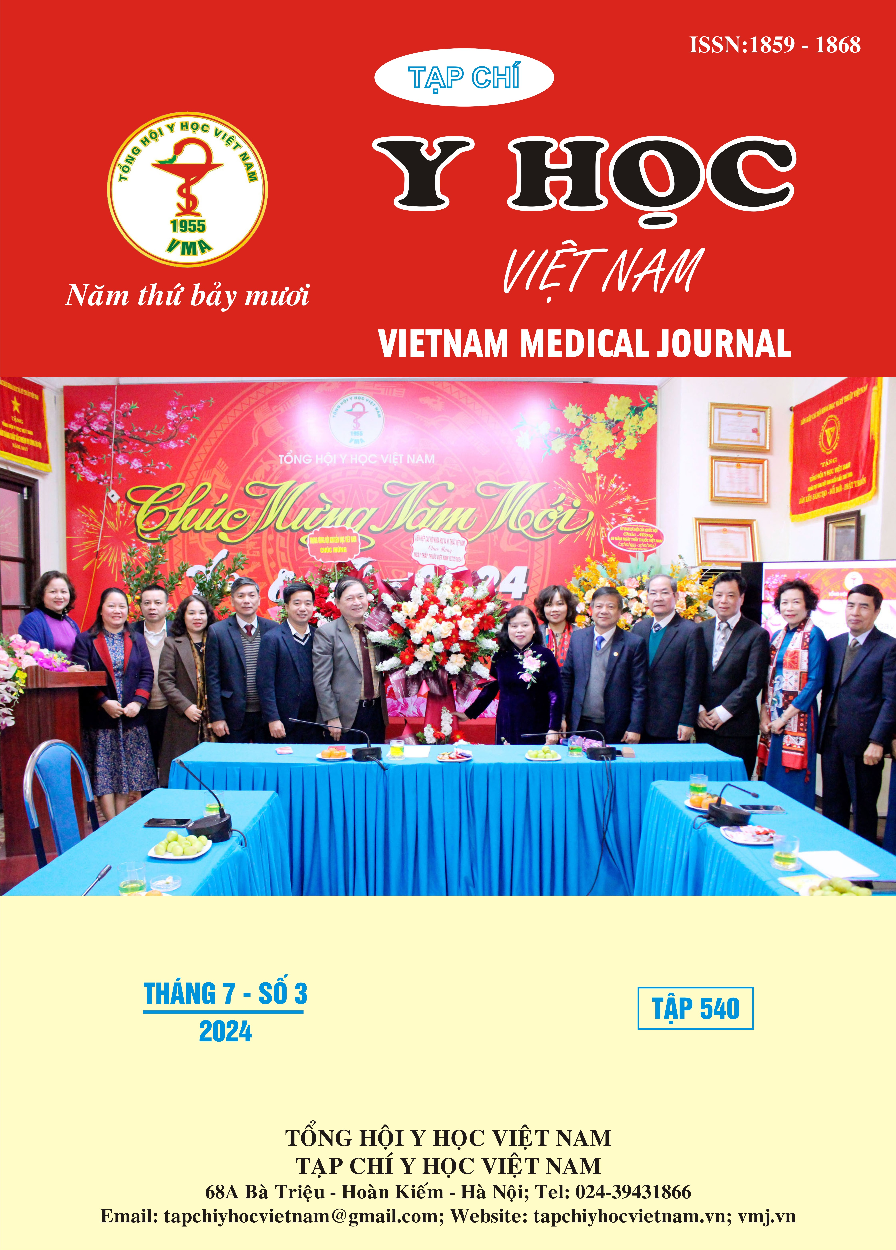EVALUATION OF RELATED FACTORS AND SHORT-TERM TREATMENT FAILURE USING HIGH-DOSE INTRAVENOUS NEXIUM IN PATIENTS WITH FORREST IIB CLASSIFIED GASTRIC-DUODENAL ULCER BLEEDING
Main Article Content
Abstract
Background: Many factors influencing the effectiveness of Nexium in patients with upper gastrointestinal hemorrhage due to gastric and duodenal ulcers classified as Forrest IIB have not been fully studied. The severity of the hemorrhage, including the volume of blood loss, unstable vital signs, and the requirement for multiple blood transfusions, are important factors that may affect treatment outcomes. Objectives: Evaluating factors related to treatment failure outcomes of high-dose intravenous Nexium in patients with upper gastrointestinal hemorrhage due to gastric and duodenal ulcers classified as Forrest IIB. Materials and methods: An uncontrolled interventional study was conducted on 51 patients diagnosed with upper gastrointestinal hemorrhage due to gastric and duodenal ulcers classified as Forrest IIB, treated with high-dose intravenous Nexium at Can Tho Central General Hospital from June 2022 to May 2024. Results: The average age of the study subjects was 64,7 ± 17,1 years, with a male-to-female ratio of 2:1. The mean Blatchford score was 11,6 ± 3,0 points. The average transfusion rate was 94,1%, with a median blood transfusion volume of 3 units. The treatment failure rate was recorded at 17,6%. Multivariate logistic regression analysis showed that the number of blood transfusions ≥ 5 units increased the likelihood of treatment failure by 49,3 times (95% CI: 1,8 – 1390,1; p = 0,022) and a heart rate ≥ 100 beats per minute at the time of admission increased it by 20,7 times (95% CI: 1,1 – 409,3; p = 0,046), both statistically significant. Conclusion: Most patients with Forrest IIB gastric-duodenal ulcer bleeding respond well to medical treatment with high-dose intravenous Nexium. Among these patients, the number of blood transfusions ≥ 5 units and a pulse rate ≥ 100 beats per minute at the time of admission were associated with an increased rate of treatment failure.
Article Details
Keywords
Gastric and duodenal ulcer bleeding, Forrest classification, FIIB, high-dose intravenous Nexium.
References
2. Barkun A. N. Bardou M., Kuipers E. J., "International consensus recommendations on the management of patients with nonvariceal upper gastrointestinal bleeding", Annals of Internal Medicine. 2010. 152(2):101-113.
3. Bitar S.M. Moussa M., "The risk factors for the recurrent upper gastrointestinal hemorrhage among acute peptic ulcer disease patients in Syria: A prospective cohort study", Ann Med Surg (Lond). 2022. 74:103252.
4. Gralnek I. M. Dumonceau J. M., Kuipers, E. J., "Diagnosis and management of nonvariceal upper gastrointestinal hemorrhage: European Society of Gastrointestinal Endoscopy (ESGE) Guideline", Endoscopy. 2015. 47(10):a1-a46.
5. Kim S.H. Jung J.T., Kwon J.G., et al., "Comparison between Endoscopic Therapy and Medical Therapy in Peptic Ulcer Patients with Adherent Clot: A Multicenter Prospective Observational Cohort Study", Korean J Gastroenterol. 2015. 66(2):98-105.
6. Laursen S. B., J. M. Hansen và O. B. Schaffalitzky de Muckadell (2012), "The Glasgow Blatchford score is the most accurate assessment of patients with upper gastrointestinal hemorrhage", Clin Gastroenterol Hepatol. 10(10), tr. 1130-1135.e1.
7. Olivarec-Bonilla M., A. M. García-Montano và A. Herrera-Arellano (2020), "Upper gastrointestinal hemorrhage re-bleeding risk according to the Glasgow-Blatchford scale: a triage tool", Gac Med Mex. 156(6), tr. 493-498.
8. Sverdén E. Mattsson F., Lindström D., Sondén A., Lu Y., Lagergren J., "Transcatheter arterial embolization compared with surgery for uncontrolled peptic ulcer bleeding: a population-based cohort study", Ann Surg. 2019. 269(2):304-309.
9. Wang C. H. Ma M. H., Chou H. C., "High-dose vs non-high-dose proton pump inhibitors after endoscopic hemostasis in patients with peptic ulcer bleeding: a systematic review and meta-analysis of randomized controlled trials", Archives of Internal Medicine. 2009. 170(9):751-758.


